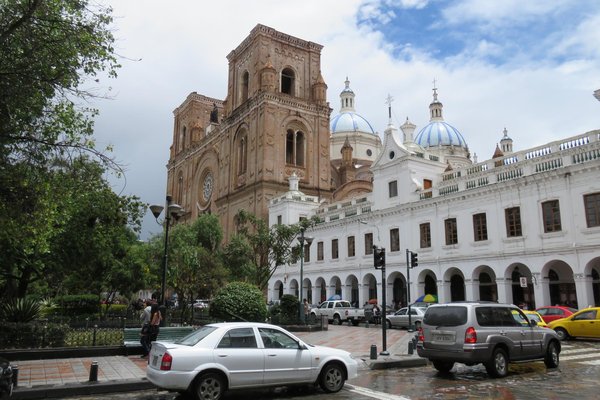Ecuador
Santa Ana de los Rios de Cuenca
The Historic Centre of Santa Ana de los Ríos de Cuenca is an example of an inland colonial town, founded by the Spanish in 1577.
The town was established to support the agricultural development of the area. It is located in the Andean highlands at about 2500m above sea level, in a strategic position between Quito and Lima. Cuenca was laid out according to a strict grid. Notable monuments include the New Cathedral, Old Cathedral, Carmelite Monastery, and Church of Santo Domingo. In the outskirts lies the archaeological site of Pumapungo, built in the 15th century by the native Inca-Canari community.
Community Perspective: The New Cathedral is the city’s main landmark, and it is worth going out to the ruins of Pumapungo. The center is easily walkable.
Site Info
Official Information
- Full Name
- Historic Centre of Santa Ana de los Ríos de Cuenca (ID: 863)
- Country
- Ecuador
- Status
-
Inscribed 1999
Site history
History of Santa Ana de los Rios de Cuenca
- 1999: Inscribed
- Inscribed
- Type
- Cultural
- Criteria
- ii
- iv
- v
Links
- UNESCO
- whc.unesco.org
- Official
-
- cuenca.com.ec — Turismo Cuenca
- Related
-
- gringotree.com — 5 Things You Can't Miss In Cuenca's Cathedral of Immaculate Conception
All Links
UNESCO.org
- whc.unesco.org — whc.unesco.org/
Official Website
- cuenca.com.ec — Turismo Cuenca
Related Resources
- gringotree.com — 5 Things You Can't Miss In Cuenca's Cathedral of Immaculate Conception
Community Information
- Community Category
- Urban landscape: Colonial
Travel Information
Recent Connections
-
Perfect Inscriptions
1999 -
World Craft Cities
Goldsmiths, Jewelery, Pottery, Basket W… -
The Jean-Paul-L’Allier Prize for Heritage
2013: Integral rehabilitation project o…
Connections of Santa Ana de los Rios de Cuenca
- Individual People
-
-
Visited by Alexander von Humboldt on his travels
Jul 13 1802 -
Max Uhle
In 1923 Uhle excavated the ruins of "Tomebamba" the pre-Columbian city over which Cuenca was constructed. In particular he identified a part of the city built by the Incas after their conquest of the indigenous Canari and named "Pumapungo" ("Door of the Puma"). He attributed excavated buildings as e.g. The Palace of Huayna Capac.
-
- Geography
-
-
Amazon Basin
"The dominant features of the city's geography are also the source of its name in Spanish: the four rivers of Cuenca (meaning a basin made by a confluence of rivers). These rivers are the Tomebamba (named after the Inca culture), Yanuncay, Tarqui and Machangara, in order of importance. .... These four rivers are part of the Amazon river watershed" (Wiki) -
Andes
(2500 mtrs) -
Pan-American Highway
Ecuador Highway 35 passes through Cuenca -
Highest cultural WHS
2,550 m
-
- Trivia
-
-
Dubbed as another WHS
Named after Cuenca in Spain. Plus its Inca predecessor Tumebamba was dubbed second Cuzco. -
Built or owned by Germans
The New Cathedral was designed by Juan Bautista Stiehle, a German-born friar. -
Built or owned by Spanish
The Spanish settlement of Cuenca was founded on April 12, 1557 by the explorer Gil Ramírez Dávalos. Andrés Hurtado de Mendoza, then Viceroy of Peru had commissioned the founding and ordered the city named after his home town of Cuenca, Spain (wiki)
-
- Architecture
-
-
Renaissance
Example of Renaissance urban planning -
Carrara marble
New Cathedral: ... the floor is covered with pink marble, brought from Carrara (Italy) (wiki) -
Neoclassical architecture
the Palace of Justice, a solid neoclassical building (nom file) -
Domes
New Cathedral has 3 blue domes -
Baroque
Carmen de la Asuncion Church
-
- Damaged
-
-
Destroyed during invasion
In late 1531 or early 1532, Atahualpa and his generals forced the city Tumebamba to surrender and had it destroyed. Tumebamba is the Inca city that was on the present site of Cuenca, Ecuador
-
- World Heritage Process
-
-
Perfect Inscriptions
1999
-
- Religion and Belief
-
-
Dominican Order
Church of Santo Domingo -
Franciscan Order
San Francisco ChurchSee cuenca.com.ec
-
Carmelites
Carmelite Monastery -
Legends and Folk Myths
Cuenca is considered a candidate for the mythical city of gold, El Dorado. -
Cathedrals
Old and New Cathedral (only latter is in use), Neo-Gothic style (1880)
-
- Human Activity
-
-
Human Sacrifice
Pumapongo: Uhle uncovered the skeleton of a man ... evidence of the pre-Columbian custom of burying a man alive in the foundation of a new wall to give it strength (Moon guidebook) -
Man-made Terraces
Pumapungo
-
- Constructions
-
-
Canals
Especially important in the low sector is the presence of a great canal 350 meters long, with systems of baths and pools for collecting water (nom file - Pumapongo) -
Historical Organs
The pipe organ constructed in the year 1739 is a tresure of inestimable value (nom file) -
Unfinished constructions
The square twin towers at the front of the New Cathedral are said to be unfinished (supposed to have a blue dome each as well) -
Prison
Casa de Temperancia (now Modern Art Museum) -
Baths
Pumapongo Inca bath - systems of baths and pools for collecting water (nom file)
-
- WHS on Other Lists
-
-
U.S. Ambassadors Fund
Restoration of an Historic Conventual Bakery in the Todos Santos Section of Cuenca (2010) -
World Monuments Watch (past)
Todos Santos Cathedral (Urgent preservation actions needed) (2010), Remigio Crespo Toral Museum (2014)See www.wmf.org
-
The Jean-Paul-L’Allier Prize for Heritage
2013: Integral rehabilitation project of the Tres de Noviembre Walkway, the de la Madre Park, the stairway, and the footbridge facing the University of Cuenca -
World Craft Cities
Goldsmiths, Jewelery, Pottery, Basket Ware, Wrought Iron, Saddlery etc
-
- Timeline
-
-
Built in the 16th century
founded in 1557
-
News
No news.
Recent Visitors
Visitors of Santa Ana de los Rios de Cuenca
- Adrian Turtschi
- Alberto Rodriguez Gutierrez
- Alejandro Lau
- Alexander Lehmann
- Ali Zingstra
- Ammon Watkins
- Bamse
- basementonline
- Bill Maurmann
- Bram de Bruin
- Carlo Medina
- Carlos Sotelo
- Christoph
- CynthiaW
- Daniela Hohmann
- Daniel Gabi
- Don Irwin
- Edisonb420
- Els Slots
- Erik Jelinek
- Eva Kisgyorgy
- Francky D'Hoop
- Frédéric M
- Garrett
- Geert Luiken
- George Gdanski
- Hammeel
- Harald T.
- Harry Mitsidis
- headventure
- hotpickle
- Javier
- Jay T
- Jean Lecaillon
- Jens
- J_neveryes
- João Aender
- Jon Opol
- KarenBMoore
- KateY
- KeithBailey
- Krijn
- Linz
- Lithobates
- Loic Pedras
- Lucas Del Puppo
- Luis Filipe Gaspar
- Maja
- Malgorzata Kopczynska
- marcel staron
- Marcobrey
- Michael Ayers
- MichaelH
- Michael Novins
- MoPython
- Patrik
- Philipp Leu
- Pieter Dijkshoorn
- Randi Thomsen
- Reza
- Riccardo Quaranta
- Rob Wilson
- Roger Ourset
- Roman Bruehwiler
- saraleonela
- Sergio Arjona
- sibariam
- Simonh
- Solivagant
- Stijn
- Sutul
- Svein Elias
- Tamara Ratz
- Tevity
- Thomas Buechler
- Thomas van der Walt
- Timonator
- tony0001
- Westwards
- zfish
- Zoë Sheng
Community Reviews
Show full reviews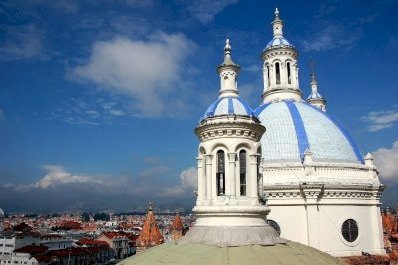
Despite its small size, Ecuador boasts a large number of sights. Even setting aside Galapagos Islands, mainland Ecuador possesses many natural attractions, especially for birdwatchers and hikers. Ecuador also has a number of cultural or human-made sights, and Cuenca is one of its better urban destinations. Although I would not say that Cuenca was the highlight of my 2016 Ecuador trip (hiking the mountain villages of Quilotoa wins that distinction), I do think of the attractive city as a noteworthy part of my itinerary.
I went to Cuenca by bus from a small town called Alausi. I had been in Alausi to embark on La Nariz del Diablo (The Devil's Nose) train, which zig-zags down the rocky slopes of the Andes. I understand that the train ride service did not survive the COVID-19 pandemic and is unfortunately no longer operating.
I arrived in Cuenca at night and, by fortunate happenstances, was greeted by fireworks bursting above Cuenca's most famous landmark, the Cathedral of Immaculate Conception. While the Cathedral - with its unmissable sky-blue domes - dominates most discussions about Cuenca's sights, the historical city has many other churches and monasteries to explore. I specifically found interesting the 'old cathedral' El Sagrario - located across the Cathedral on the other side of the leafy Parque Calderón - and the Museo del Monasterio de las Conceptas. Both of these sites contained religious wood figures, which had faces that were more eerie than divine. If you had your fill of the …
Keep reading 0 comments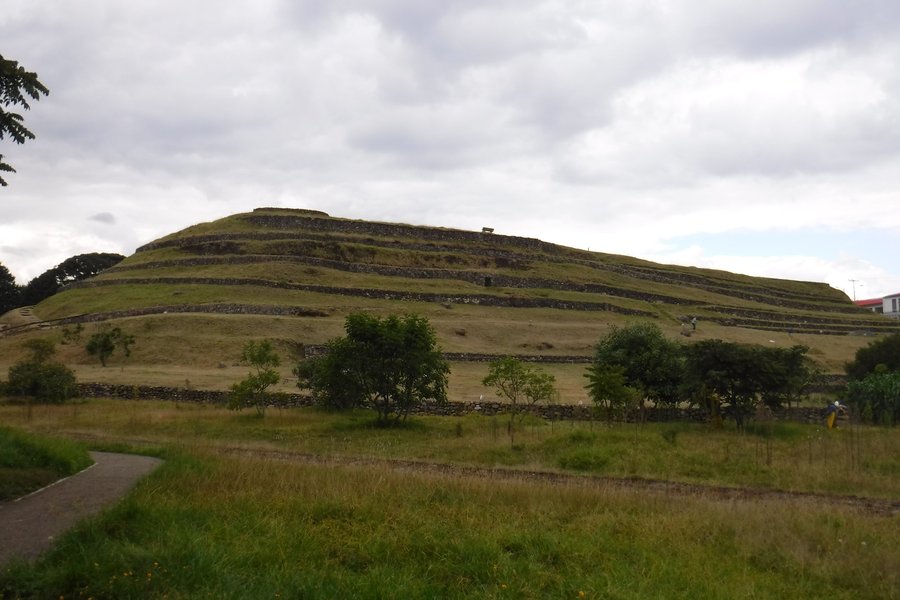
I visited Cuenca (how it is called in Ecuador) in February 2020. I spent a full day walking the city with some locals I met as my guides. I found it to be a very pleasant city to discover by foot. The New and Old Cathedrals around Parque Calderón are definitely highlights here, but the real charm of Cuenca lies in its numerous richly decorated houses with cast iron balconies. The city harbors four rivers that flow down from the mountains and its tap water can thus be drank directly as it is purer than many North American cities.
I advise people visiting Cuenca to grab a map and walk around to visit every church and museum of the old town. It should allow you to get a good feel of the city. San Blas, San Sebastian and San Francisco are interesting plazas. Santo Domingo is another nice church. We took the bus to Turi where we found a closed church, but an amazing view from the mirador. Like Els, I also visited Pumapungo and was pleasantly surprised by the ruins and the adjacent museums. The ruins were more imposing than I had anticipated and the recreated gardens, pond and aviary were also enjoyable.
Logistically, the center is easily walkable and the suburbs seem to have good and frequent bus connections. I came from Quito on a night bus, spent one night in Cuenca and headed next to Loja, where I slept before taking the bus to Jaen in Peru …
Keep reading 0 comments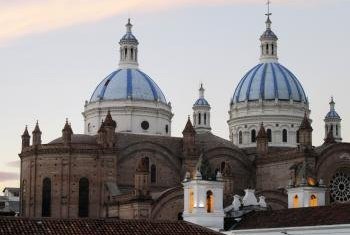
Although it was rainy during most of my visit, I found the city of Santa Ana de los Ríos de Cuenca to be the most charming of the cities I visited on the Ecuadorian mainland this past June. I arrived at night, but the room in the former monastery I stayed in had a magnificent view of the illuminated blue-hued domes of the New Cathedral. The next morning I ventured out in the rain to see both the New and Old Cathedrals and the Plaza Calderon, in the heart of the old city. The Old Cathedral is now a museum, and worth a visit, but I appreciated the architecture of the New Cathedral more. Later in the day, as the rain cleared, I embarked on a sightseeing tour via a double-decker bus departing from Plaza Calderon. I chose the southern tour route, which I highly recommend, as it includes the Mirador with its fine view of the city. The upper level of the tour bus offers an incredible view of the cobble-stoned streets and colonial architecture of the old town. Also not to be missed in Cuenca are the Panama hat factories, where you can watch some of Cuenca's more famous exports being made. I would have loved to have had more time in Cuenca.
Logistics: The downtown section of Cuenca is pedestrian-friendly. There is a local sightseeing bus with regular departures from Plaza Calderon, offering tours of the northern and southern parts of the city.
Keep reading 0 comments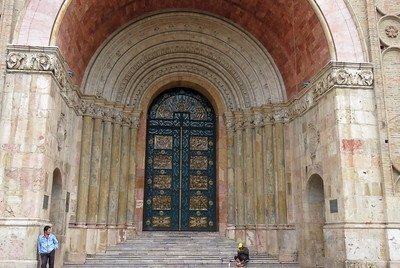
They just call it ‘Cuenca’ in Ecuador, but with the Spanish Cuenca also inscribed we have two WHS with the same name! So for the website, I’m sticking to its full name: Santa Ana de los Rios de Cuenca. Looking at the current state of our connections, links, reviews (1) and photos (1) for this WHS, not many previous visitors found anything to write home about or even had a critical look at its specific site page. So with Cuenca being the first stop on my Ecuador trip, it’s now time for a makeover.
Adding additional links proved to be hard. Actually, none of the key attractions of the city has a functioning website. I found a number of blog posts from mainly Americans living in the city glorifying life there, but most were too shallow to warrant a link. I eventually settled for 5 Things You Can't Miss In Cuenca's Cathedral of Immaculate Conception. The best website about Cuenca still is the official one from the local tourist department. It does have comprehensive listings of churches, museums etc with their opening hours. I used it in planning my itinerary for the day, as it has so much more detail compared to what I had been able to find elsewhere.
I easily found 11 additional connections to characterize Cuenca. The New Cathedral, the city’s main landmark, in itself, is a rich source. It was designed by a German friar, has 3 blue glazed domes, Carrara marble on the …
Keep reading 0 comments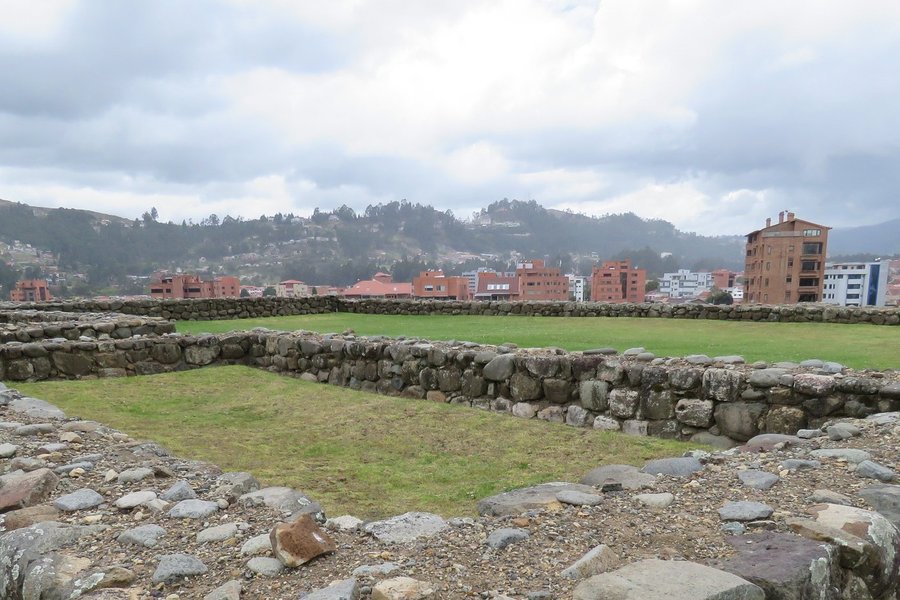
Easter 2014 we visited Santa Ana de Los rios de Cuenca (or Cuenca), the third biggest city, on a "round trip" in Ecuador, visiting Quito, Baños de Aqua Santa (or plain Baños), Cuenca and last but not least Galapagos. Traveling "avenida del volcanos" down south was great and the cities are exquisite. A hired car and driver gives a tremendous "freedom" on the road.
We started our Cuenca-visit in fact before we entered the city with a visit to Ecuador's greatest Inka-ruin, Ingapirca. It's far from as great as the more famous Peruvian Inka-sites, but it's a "must-see" here. The local guide (it's mandatory) filled us in with a lot of interesting details of the "symbiosis" of Inkas and the more local Cañari.
In Cuenca we connected with a Norwegian guide (Anne, who lives there and has been living there for 25 years) and that gave us first hand en effective insight to the city, it's history, culture, architecture, special buildings, it's people and of all Ecuador.
In Cuenca round the main square, plaza Calderon, lies the town hall and the old and the great new cathedral. At the platform between the two the towers of the new cathedral it's a fabulous view. The church has room for 10,000 people.
We pass through the flower market on our way to the Carmelite monastery where we just had to shop just to experience their odd way of customer-handling by not showing themselves!
Passing through more markets we bought lama sweaters and …
Keep reading 0 comments
